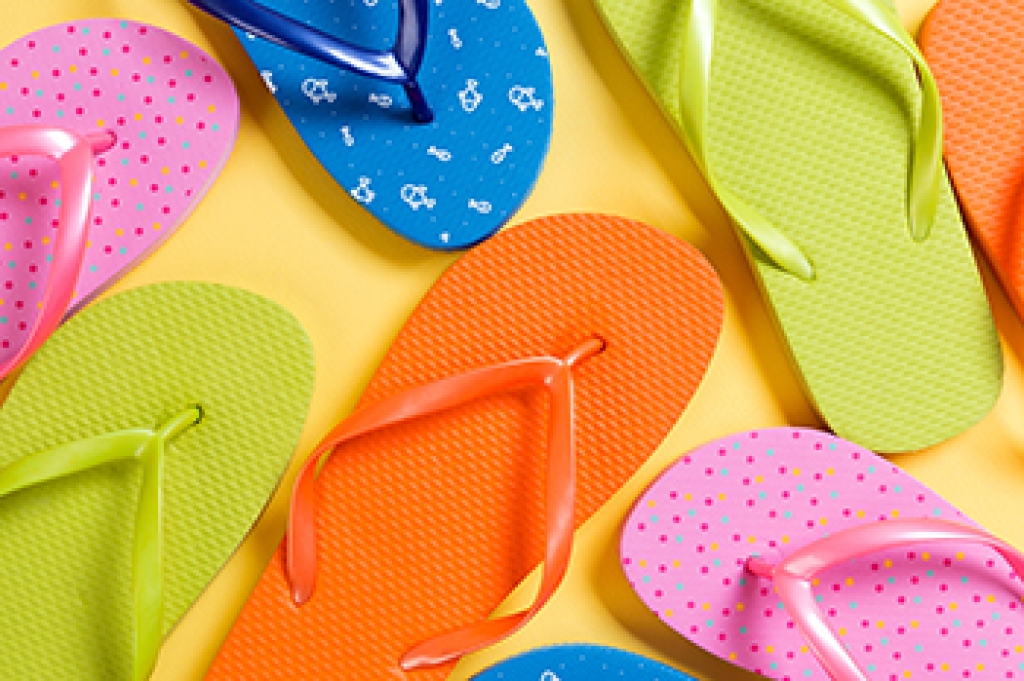 Flip-flops might be the choice footwear for the summer, but they are not the choice footwear for maintaining the health of your feet. If you’ve ever worn flip-flops, you may have noticed that they can be difficult to keep on your feet as you walk. To to prevent them from slipping off, you must walk with your toes bent around the ends of the shoes. This toe posture can increase your risk of foot deformities, such as hammertoes and bunions. Frequently wearing flip-flops can also change your gait or walking pattern. Although they come in many fun patterns and colors, these flimsy shoes don’t come with much foot protection or arch support, leaving your feet exposed to the elements and at risk of injury. If you must wear flip-flops, it’s suggested that you wear them only for short periods of time. To learn more about the dangers of flip-flops, please consult with a chiropodist.
Flip-flops might be the choice footwear for the summer, but they are not the choice footwear for maintaining the health of your feet. If you’ve ever worn flip-flops, you may have noticed that they can be difficult to keep on your feet as you walk. To to prevent them from slipping off, you must walk with your toes bent around the ends of the shoes. This toe posture can increase your risk of foot deformities, such as hammertoes and bunions. Frequently wearing flip-flops can also change your gait or walking pattern. Although they come in many fun patterns and colors, these flimsy shoes don’t come with much foot protection or arch support, leaving your feet exposed to the elements and at risk of injury. If you must wear flip-flops, it’s suggested that you wear them only for short periods of time. To learn more about the dangers of flip-flops, please consult with a chiropodist.
Flip-flops, though they may seem harmless, are bad for your foot health. If you would like to learn more about the many problems that can be caused by frequent flip-flop wear, please consult with one of the specialists from Thornhill Foot Clinic. Our chiropodists can help you maintain the health of your lower limbs and your mobility.
Flip-flops are the quintessential summer shoe, seemingly perfect for the beach or pool. Unfortunately, these flimsy shoes are not a good choice when it comes to keeping your feet healthy.
Frequently wearing flip-flops is associated with:
- Hammertoes
- Bunions
- Plantar fasciitis
- Heel spurs
- Cracked heels
- Plantar warts
- Athlete’s foot
- Foot pain
- Foot and ankle injuries
- Gait changes
- Leg, hip, and back pain
The best way to avoid these issues is to swap your flip-flops for more protective and supportive shoes. If you must wear flip-flops, wear them only for short periods of time.
If you have any questions please feel free to contact our office located in Vaughan, ON .
 Corns
Corns


